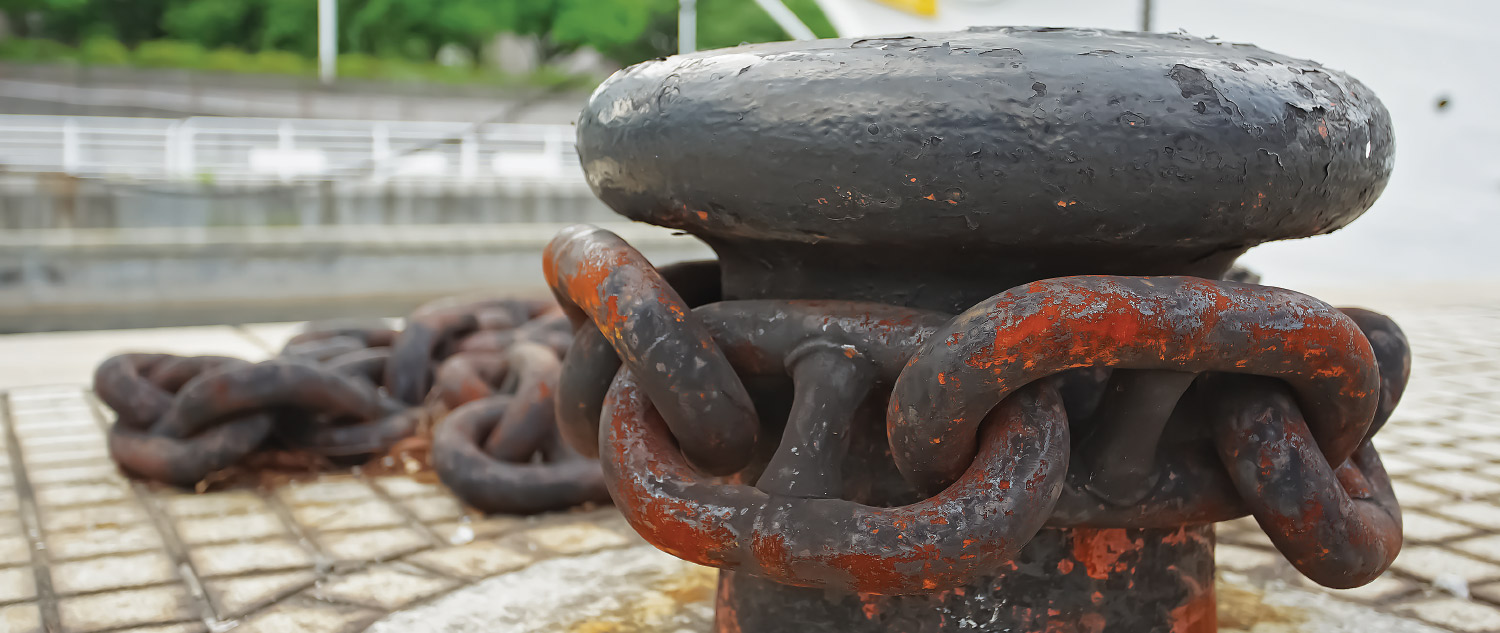
n 1998, Chad Scott plunged into the depths of Duluth-Superior Harbor in a routine check of the underwater infrastructure of the Coast Guard station. What he found shocked him. Corrosion, much like you would find in a saltwater environment, covered the steel structures below the surface in freshwater Lake Superior.
Chad, a marine civil engineer and commercial hard hat diver currently with AMI Consulting Engineers, had previously completed most of his diving work on the east coast where finding corrosion on the sea wall is quite common. It isn’t something you typically see much of in fresh water. He grew up in Duluth, Minn., but had been in the military for eight years and went to college before heading east.
“When you’re exposed to a different environment you tend to recognize things that aren’t normal to another environment,” Chad explained. He tried to bring the issue to people’s attention, but no one seemed interested in listening, something he says was frustrating.
“A lot of people didn’t want to believe they had a major corrosion problem so we just kept working and every time we did an underwater inspection we kept documenting it,” Chad said. “Before you know it we had done six to eight docks around the harbor and all of them had the same or similar type of corrosion.”
Finally in 2003, after five years of documenting, people started to listen and some real players came on board that could help get things moving. By 2006, funding was in place to research the problem and discover the truth behind this freshwater corrosion occurrence. According to Chad, Duluth Seaway Port Authority was most interested because they had the largest waterfront structure in the harbor owned by one entity and wanted to protect their investment.
They placed samples, or coupons, up the river systems in Minnesota and found that something was coming down in the water which leads to microbiologically induced corrosion (MIC), which is rare in fresh water. It’s an iron- or sulfate-reducing bacteria.
“It’s shown to be natural, which means there’s no way of stopping it,” Chad said. “It’s in our way and you can’t change the water chemistry to stop it.”
Chad and others working on the problem including Sea Grant, U.S Army Corps of Engineers and Great Lakes Maritime Research Institute, noticed that structures installed in the 1940s and structures installed in the 1970s had the same amount of corrosion. So what changed in the 70s that led to the corrosion?
“By cleaning up the water we’ve actually improved the ecosystem itself for the fish,” Chad explained. “We’ve made improvements there. We’ve had to adapt now and protect the structures. Whenever you change one thing, another thing can happen. It’s a good thing that we cleaned the water and it’s a great thing for the ecosystem, but we have this high rate of corrosion that we now have to learn to protect our structures from.”
Chad was adamant about the positives that came from the Clean Water Act, including the improvement that it had on fishing in Lake Superior, but they now had a problem to fix and it was time to get to work. Many solutions were explored with different degrees of success, though the best option remaining was ultimately coatings, or hybrid epoxy paints, that when applied to the underwater steel would provide an additional 20 to 30 years of life to the structure.
They wanted coating manufacturers to put their money where their mouth was and offered them a deal.
“We prepared the canvas for them but they had to pay to put their coating on to show us that it would work,” Chad said. “Through those studies we were allowed to monitor them for a long period of time and we determined which coatings had the best longevity in a marine environment.”
Though the coatings aren’t cheap, they’re protecting structures vital to harbor life. A silver lining in all of this is that the corrosion only seems to affect the top 10 to 15 feet of the water. This allows Chad and other to focus their attention on the steel in that range, instead of the entire sea wall.
Though they have a great handle on it, Chad expects climate change will lead to warmer years and increased corrosion rates, meaning this problem isn’t over quite yet. Chad suggests people do inspections on permanent structures at least every five to six years.
“If people don’t know if they have the problem, the best way to find out is get under the water and do an inspection,” he says, “and that’s what we always tell our clients. Some people don’t want to know because then they have to deal with the problem. But the best way to know and plan for it so you don’t find out abruptly when your wall fails, is to hire somebody to get there and do the underwater inspection.”